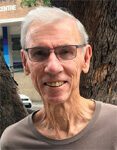Cannae Point, or Flagstaff Point, is significant to Manly’s history in many ways
Cannae Point, also called Flagstaff Point, is a rocky point jutting out into Sydney Harbour at the southern end of Quarantine Beach at North Head. When the Quarantine Station was built in 1832, a tall flagstaff was installed on it. Historically its purpose was to signal – by flying a yellow flag – when infectious people were in residence. This same yellow flag or jack was also flown by ships as they entered the harbour if they had people with infectious diseases on board.
There is some confusion over the source of the name Cannae. Some connect it to the battle fought between the Roman Republic and the victorious Carthageans (led by Hannibal) near the ancient town of Cannae in south-east Italy in 216 BC. However, it is almost certain that it is of Indigenous origin.
In his diary of 1790/91, William Dawes lists a woman called Boorreea whose tribe is Cannalgalleon. For a male this tribe would have been called Cannalgal. Also, George Thornton (1819-1901) states, from his personal acquaintance with local Aboriginal people, that the aboriginal name of Manly proper was ‘Cannae.’ The local male tribe name would accordingly have been Cannaegal.
I think it is much more likely that Cannae Point is a remnant of the Indigenous name for Manly rather than a reference to an ancient Roman battle.
The flagstaff still stands on the point today although the Quarantine Station is no longer active, having closed in 1984. Erected around 1832, it is the oldest surviving flagstaff in Australia. Approximately 15 metres high, it is a replica of the mast of a square-rigged sailing ship. The mast and rigging have been repaired several times over the years but the structure is again in danger of deteriorating. I hope that those responsible will do what is necessary to ensure its survival.
Acknowledgment to Keith Amos for his research

Richard Michell is the vice-president of the Manly, Warringah and Pittwater Historical Society and the secretary of Friends of Dee Why Lagoon. mwphs.org.au and fodyl.au








